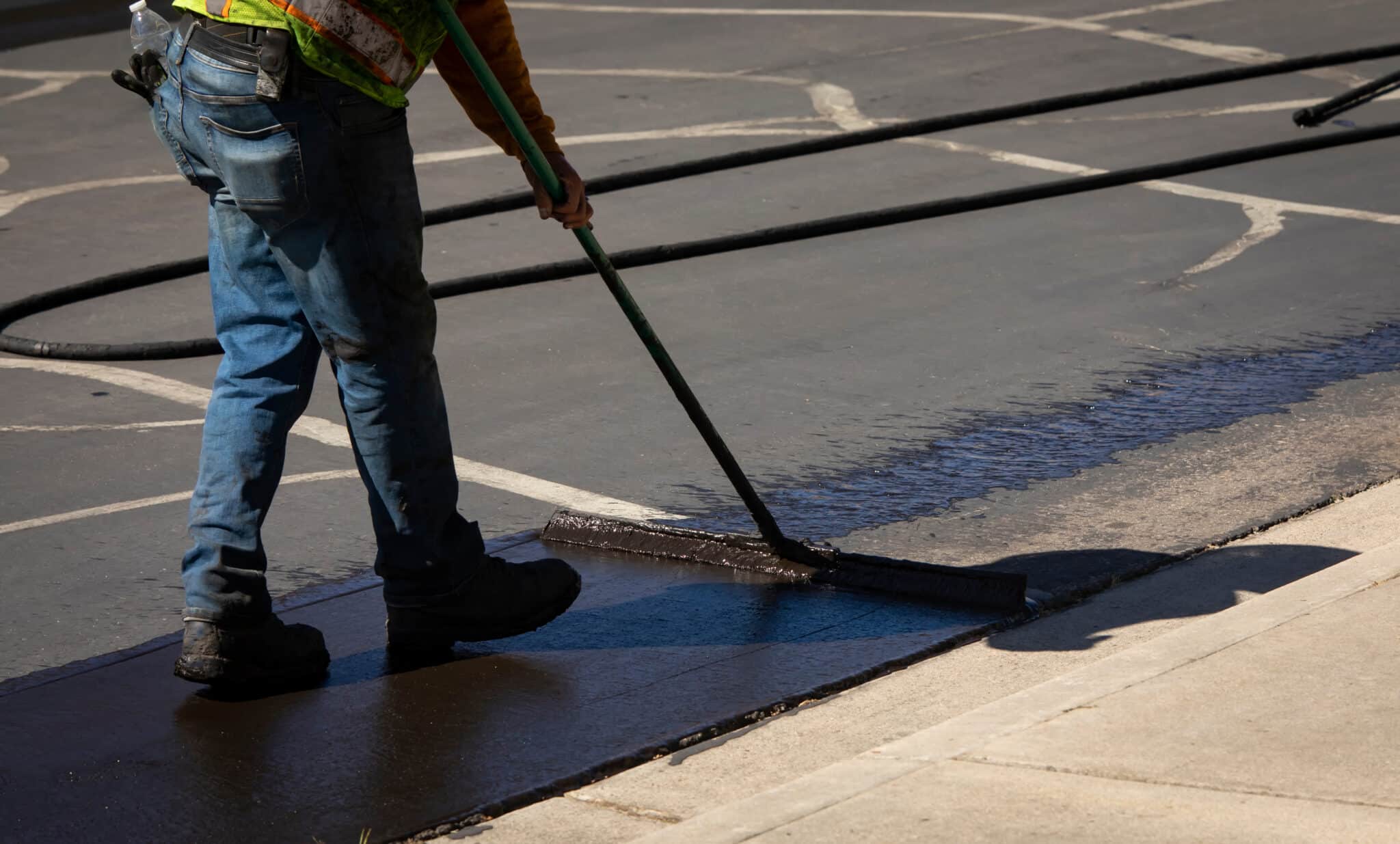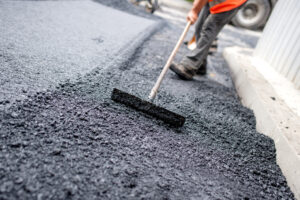Whether you own residential, commercial, or industrial properties, chances are one of your biggest challenges is keeping up with asphalt maintenance. After all, the cost of materials and labor can add up quickly if you’re not staying on top of regular upkeep. However, preventative measures like routine inspections and proactive repairs can actually help save money in the long run. Below, we’ll discuss the benefits of regular asphalt maintenance and provide helpful tips to ensure your asphalt stays in great condition.
Why is Asphalt Maintenance so Important?
Property owners usually have a lot on their plates, which means that maintaining their asphalt can often be overlooked. While asphalt maintenance comes with a cost and takes time, it can prevent minor damages from snowballing into major problems that could drain your wallet with costly repairs.
With regular sealcoating, an asphalt surface can last up to 25 years. However, this number can decrease significantly in areas with high traffic or if proper maintenance is ignored. Without proper maintenance, your asphalt will eventually deteriorate quickly and leave you with repairs or even a replacement needed.
Some benefits of regular asphalt maintenance include:
- Cost savings: As mentioned earlier, preventative measures can save money in the long run by avoiding costly repairs or early replacements.
- Safety: Regular maintenance helps identify and fix potential hazards like cracks or potholes, preventing accidents from occurring on your property.
- Aesthetics: Maintaining asphalt can improve the overall appearance of your property, making it more visually appealing to visitors and increasing the property value.
- Longevity: By keeping up with regular maintenance, you can extend the lifespan of your asphalt surface.
It is important to note that asphalt maintenance should be done by professionals who have the proper equipment and knowledge to do so effectively. Doing it yourself can lead to worse results and cost you more in the long run.
How Asphalt Care Can Save You Money
Maintaining your asphalt can save you more money than you may think. Asphalt maintenance is crucial to ensuring its longevity and preventing expensive repairs down the line.
For example, an average driveway replacement can cost between $8-$15 per square foot, depending on the size, materials, and labor for the removal and new paving. On the other hand, preventative maintenance measures, such as sealcoating, costs around $0.25 per square foot and only needs to be done every 2-3 years.
This means for a 4,800 square-foot driveway or parking lot; you would spend around $1,200 on sealcoating every 3 years, totaling $7,200 over a 20-year period. Compare this to potentially spending tens of thousands on early replacement.
Other maintenance methods, like crack sealing, can also save you money. While these services are $0.50-$3.00 per square foot, repairing the potholes that these cracks will turn into will be much more expensive.
Investing in regular asphalt maintenance might seem insignificant, but the long-term savings are well worth it.
Signs Your Asphalt Needs to be Repaired
Recognizing the early signs of asphalt damage can prevent costly repairs. If you notice any of the following signs, it’s time to consider repair options:
Potholes: Formed from water seeping, freezing, and thawing in asphalt, potholes are a risk to vehicles and pedestrians. Left unrepaired, they can grow in size and cause extensive damage to your asphalt.
Minor Cracking: Small cracks usually result from weather-induced changes in temperature and moisture. Left unattended, these can lead to larger problems like potholes.
Fading Color: Fading is usually caused by UV exposure, chemicals, and cleaning agents. Faded asphalt looks bad and can also be a sign that the pavement needs to be repaired.
Stains: Typically from oil spills or leaks, stains can weaken pavement and become permanent if not cleaned quickly.
Alligator Cracking: also known as fatigue cracking, is a type of crack that appears in asphalt pavement. This type of scale-like cracking is often caused by repeated traffic and heavy loads.
Drainage Issues: Improper installation or changes in the ground can lead to standing water or poor drainage, which can cause damage to the asphalt, like cracks and potholes.
By taking care of the early signs of asphalt damage, you can make your asphalt last longer and keep it looking new. Regular inspections and timely repairs are important to stop small issues from becoming big, expensive problems.
Best Practices for Maintaining Your Asphalt
To keep your asphalt pavement in top shape, it’s important to stay on top of maintenance and take timely action. By following a few simple best practices, you can simplify the process and make your asphalt last longer.
1. Regular Cleaning: Keeping your asphalt clean is the first step in maintenance. Sweep it regularly to remove debris, dirt, and dust, which can cause wear and tear. Use a pressure washer to remove stubborn stains and grime.
2. Timely Sealcoating: Sealcoat your asphalt every 2-3 years. It acts as a barrier against sun damage, water penetration, and chemical spills. Sealcoating also gives your pavement a fresh, smooth look. If you have a new asphalt surface, wait 6 months to sealcoat.
3. Crack Filling: Fill any cracks as soon as they appear. They can deepen and widen if left unattended, leading to more serious damage.
4. Pothole Repair: Immediate repair of potholes is essential. Ignoring them can lead to significant structural damage and safety issues. For smaller potholes, you can use a cold asphalt patch mix. Larger potholes require professional help.
5. Drainage System Maintenance: Ensure your drainage system functions properly. Puddles of water on the asphalt can cause damage over time. Regularly inspect and clean gutters, storm drains, and catch basins.
By following these practices, you can increase the lifespan of your asphalt and save money over time. Getting timely repairs done is a smart and budget-friendly way to keep our roads smooth, safe, and long-lasting.
Get an Asphalt Maintenance Pricing Quote for Your Property Today
Preventive asphalt maintenance is incredibly important and helps you maintain the structural integrity of your asphalt for years to come. Although asphalt repair can be time-consuming, taking care of it on a regular basis can help reduce the cost and hassle down the road. Utilize regular preventive maintenance inspections as well as filling cracks and potholes in a timely manner. Additionally, regularly sealcoat your asphalt using quality materials for maximum protection from weathering. If you still have questions or need help maintaining your asphalt, contact Superior Asphalt for asphalt repairs, sealcoating, and other maintenance services today.



